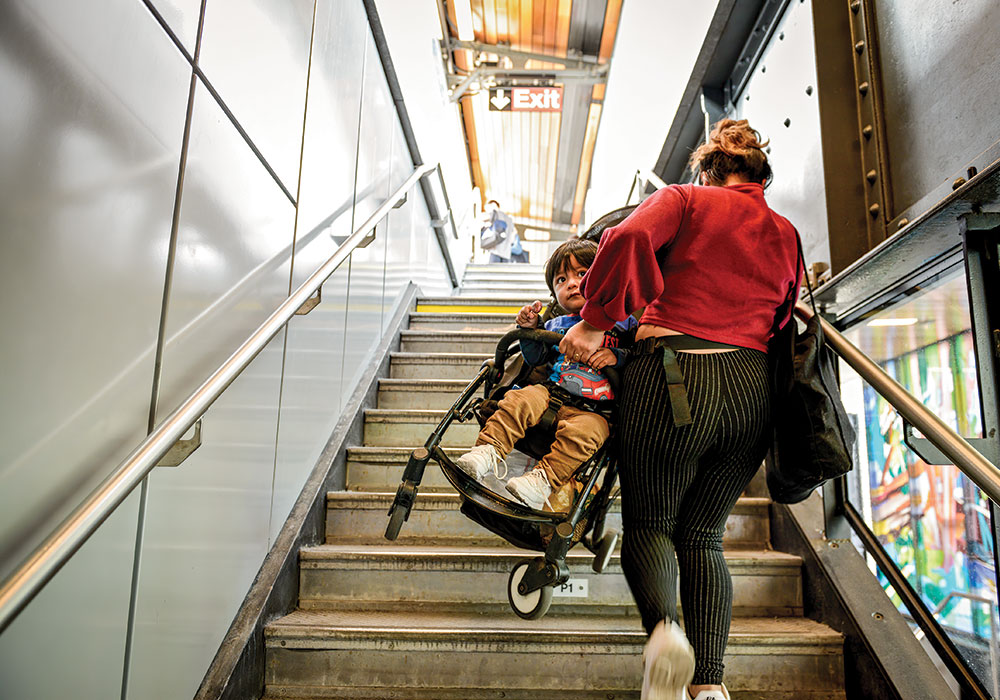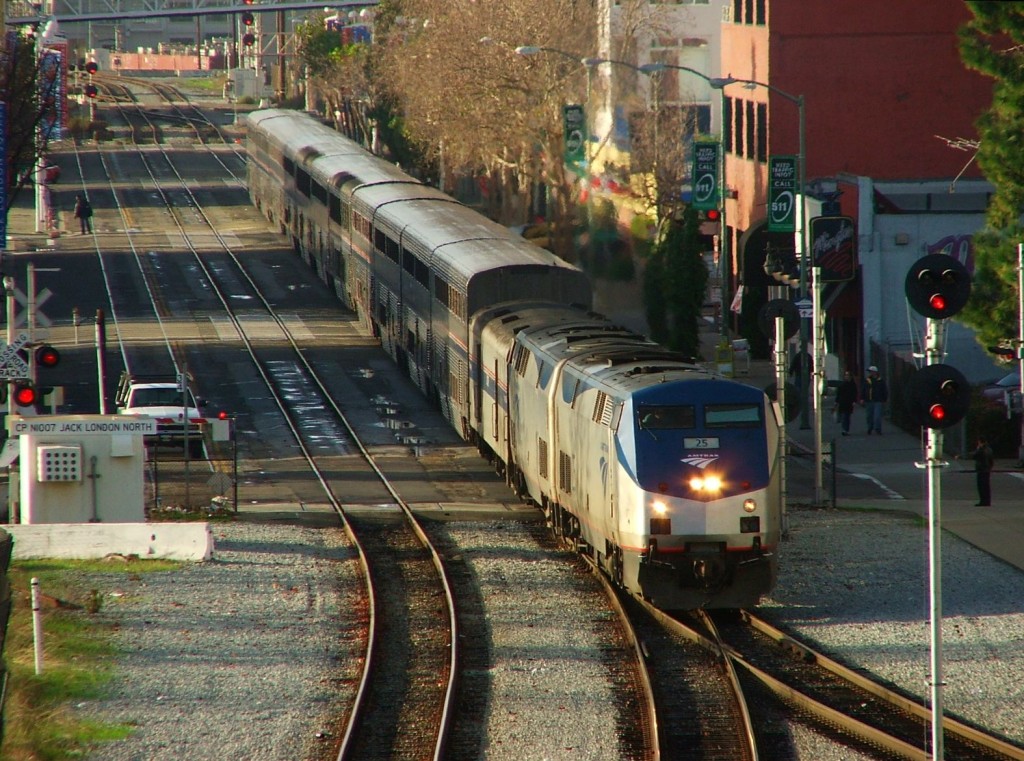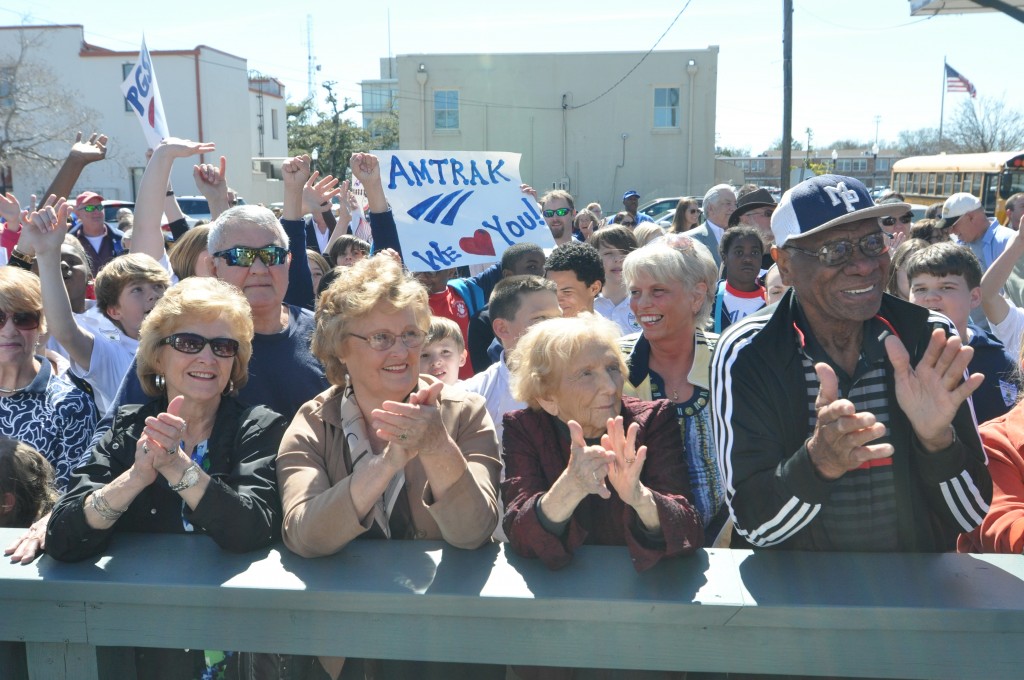
Senate Commerce Committee proves that bipartisanship doesn’t have to equal terrible transportation policy

The Senate committee tasked with handling the rail portions of the larger transportation bill managed to produce a bipartisan bill that also makes the expansion of reliable, frequent rail service to more Americans a cornerstone of its approach.

While the House writes their five-year transportation proposal all at once in one committee, the Senate breaks up the policy work between three committees. The Senators on the Environment and Public Works (EPW) Committee focused on bipartisanship at the expense of good outcomes for spending transportation dollars, but the Commerce Committee Senators, charged with passenger rail, safety, and a few other related issues, managed to be both bipartisan and set policy that will create a better, more effective transportation system.
Here’s a look at the good and the bad in the Surface Transportation Investment Act of 2021 before the committee considers it in full and likely votes on it this Wednesday, June 16.
The good: A national network of robust, passenger rail service is vital for the country’s future.
These Senators are proposing substantial steps to 1) expand, increase, and improve service, 2) focus on the entire national network (rather than just the northeast corridor), 3) encourage more local, ground-up coalitions of local-state partnerships for improving or adding new service, and 4) make it easier to finance projects and expand that authority to transit-oriented development projects. They also propose some important changes to the data we gather on safety across the entire transportation system, including our streets and roads.
Funding to expand/improve passenger rail service
When it comes to providing more funding overall for passenger rail, they propose $5 billion for the same program (Consolidated Rail Infrastructure and Safety Improvements) which provided $33 million for restoring Gulf Coast passenger rail, allowing many more communities to benefit from this program. (Current funding is about $350 million a year, or ~$1.75b over the life of the current law..)
They also provide $300 million for the Restoration and Enhancements grants that provide critical start-up operating support for new or expanded passenger service, and allow those funds to be used over six years instead of just three—recognizing that establishing new ridership on a line can take a few years.
A lot of the country’s rail infrastructure is also badly in need of updates, and the bill proposes $1.5 billion to make long overdue repairs through what they call the Federal-State Partnership for Intercity Passenger Rail Grants for state of repair.
Amtrak
For the country’s passenger rail operator, they propose a small but vital shift in mission and goals to emphasize Amtrak’s role in providing service both to rural communities and in long-distance routes and a national network. To help make this happen, they will require representation on the Amtrak Board from the Northeast Corridor, state-supported routes and long distance routes. They’ll require Amtrak to post station agents at stations with at least 40 passengers a day (and require them to be able to sell tickets), making it easier for people to use and navigate the service in smaller towns. And lastly, they’ll prohibit Amtrak from discontinuing, reducing the frequency of, suspending, or substantially altering the route of any long-distance route if Amtrak receives adequate funding for that route.
Duplicate the success of the Southern Rail Commission
A new grant program will authorize up to ten interstate rail compacts, including the Southern Rail Commission, which has been key to restoring passenger rail service on the Gulf Coast, and provide up to $1 million annually for each one. (This is double what the House provided for these commissions.) Up to $1 million—which has to be matched 50/50 with local or state dollars—isn’t a huge sum but it would be hard to overstate the potential impact of creating nine more entities like the SRC to lay the groundwork and build the coalitions required to create or improve rail service in scores of other regions. (Read more about a similar House bill and the importance of these rail compacts here.)
Improving access to financing for rehab and improvement projects
A major challenge with rail rehabilitation and improvement (RRIF) projects has been not only securing financing, but incorporating the project’s credit risk (the cost of creating the loan). This bill proposes $50 million to help offset some of these credit risk insurance premiums on financing RRIF projects.
Making it easier to finance transit-oriented development projects
More homes, offices, and retail near transit are in high demand, but because these big, complex projects are more difficult to finance than other types of conventional suburban development. The bill makes these projects (not just their rail components) permanently eligible for financing from the above RRIF program—something we’ve been working on for more than six years. “The areas around our country’s passenger rail stations are often economic sleeping giants,” as T4America co-chair John Robert Smith said in this 2015 T4America story about a previous iteration of this idea. “Finding ways to finance and catalyze smart development in and around them is a proven strategy to boost local economies.”
Extra: Safety provisions
While most of the road and transit policy gets written by other Senate committees, the Commerce Committee also has jurisdiction over safety data and reporting, and they propose some notable changes.
As chronicled in Dangerous by Design, federal data on who is being killed while using the transportation system—especially people who aren’t in a car—are incredibly limited. We don’t even know how many people are killed while trying to navigate unsafe streets in wheelchairs, for example, so the committee calls for new crash data systems to be able to distinguish bicycles, electric scooters, and wheelchairs. They propose a $200 million a year grant program for local governments to develop and carry out Vision Zero safety plans to prevent death and injury on our roads and streets. Perhaps most interestingly, they require the Secretary of Transportation to finally examine updating hood and bumper safety standards for cars and trucks with a focus on how they are affecting the injuries and deaths of pedestrians, bicyclists, or other vulnerable road users. While more needs to be done on this count (and it needs to be done far faster than the bill specifies), it’s a big deal to see a bipartisan bill finally start to call out this issue in legislation.
The bad, or opportunities missed
While the bill has a ton to praise, there are just a few missed opportunities worth noting and a few places where it falls short of what was in the INVEST Act in the House.
The bill doesn’t include two exciting rail investment programs proposed by the House.
The bill lacks any funding for the PRIME program, which is devoted to expanding and improving intercity passenger rail. The Senate proposal also lacks the Bridge, Tunnels and Safety grants which would fund major capital projects, rail bridges, stations, and tunnels that are publicly owned or owned by Amtrak. The House proposed $25 billion for each of these programs.
Just because projects are big or expensive doesn’t mean they are wise investments.
A new National Infrastructure Project Assistance program is designed to help fund projects of national significance that cost over $500 million or a large portion of small states’ transportation budgets. But while these projects are indeed hard to fund, this program is far too focused on costs and price tags, and only barely mentions any measurable things we want to accomplish. Just because projects are big doesn’t mean they are smart, and we should think about what they might do before providing money for them.
A new multimodal grant program like TIGER needs to provide more money for the best local projects.
A new program called Local and Regional Project Assistance is basically like a new $1.5 billion TIGER/BUILD/RAISE program for locals, but the $25 million cap is too low and should be raised to at least $75 million so that it doesn’t keep larger but worthwhile projects with good outcomes from applying. The program’s size is sufficiently large to both advance a few larger projects while also giving out a large number of grants to the best projects. As an example, in the first round of TIGER, there was $1.5 billion available with no cap, yet USDOT made 3 grants of around $100 million while still advancing 55 total projects.
A multimodal freight program should not presume that half of the country’s best freight projects are road projects.
The bill provides $1.2 billion for Nationally Significant Multimodal Freight Projects, but for some inexplicable reason, this bill caps the funding for truly multimodal projects at only 50 percent of the program—basically earmarking 50 percent for highway projects, before they’ve ever seen a proposal or spent a dime.
Why in the world is the committee with multimodal jurisdiction—rail, ports, and pipelines— and no jurisdiction over the highway part of the bill so intent on giving money to highway projects? And these are not gas tax dollars subject to the trust fund—this is a discretionary program using general tax dollars. Lose the cap entirely on multimodal projects and just select whatever projects will accomplish the most with the money.



